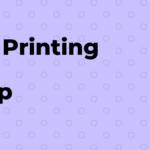Adobe Audition is an audio editing and production application used by professionals in the music, film, television, radio, and gaming industries. It provides a comprehensive set of tools for recording, editing, mixing, mastering and post-production. Adobe Audition offers powerful features that make it easy to create high-quality audio projects.
People need Adobe Audition for a variety of reasons. First of all, it allows users to record audio with high fidelity and accuracy. It also has a wide range of effects and filters that can be used to enhance the sound quality of recordings. Additionally, Adobe Audition offers powerful tools for editing audio files such as trimming clips or adding fades. Finally, its mixing capabilities enable users to combine multiple tracks into one cohesive piece of music or sound design project. All these features make Adobe Audition an essential tool for anyone who needs professional-level audio production capabilities.
Adobe Audition is a powerful audio editing and mixing application from Adobe Systems. It is used by professionals in the music, film, television, radio, and gaming industries to create soundtracks for movies, TV shows, video games, and other media. With its intuitive interface and comprehensive set of tools for editing audio files of all types—including MP3s, WAVs, AIFFs—Adobe Audition makes it easy to create professional-quality soundtracks quickly and easily. The app also includes powerful effects such as reverb and EQ that can be used to enhance the sound of your recordings. Additionally, Adobe Audition offers a wide range of features for creating podcasts including recording narration directly into the app or importing existing audio files. With its extensive library of loops and samples you can easily add music or other sounds to your projects without having to search for them elsewhere.
How to use Adobe Audition
1. Download and install Adobe Audition on your computer.
2. Launch the program and familiarize yourself with the user interface.
3. Import audio files into the program by dragging them from your computer into the media browser or using the File > Open menu option.
4. Use the editing tools to trim, fade, normalize, and otherwise manipulate your audio files as desired.
5. Add effects such as reverb, delay, chorus, etc., to enhance your audio files with a few clicks of a mouse button or keystrokes on your keyboard.
6. Record voice-overs or other live sound sources directly into Adobe Audition using an external microphone or other recording device connected to your computer’s sound card input port (if available).
7. Mix multiple tracks together in multitrack view for creating complex soundscapes and music productions with ease!
8 Export finished projects in any of several popular formats such as WAV, MP3, AIFF and more for playback on any device you choose!
How to set up
1. Download and install Adobe Audition from the Adobe website.
2. Launch the program and create a new project.
3. Select the type of project you want to work on (music, podcast, etc.).
4. Set up your audio preferences by selecting the sample rate, bit depth, and number of channels you want to use for recording and playback.
5. Add audio files to your project by dragging them into the timeline or using File > Import > Audio File from the menu bar at the top of the screen.
6. Adjust levels as needed using volume sliders or effects such as EQ, compression, reverb, etc., to shape your sound as desired.
7. When finished editing, save your project and export it in an appropriate format for sharing or distribution (e.g., WAV or MP3).
How to uninstall
1. On Windows:
a. Open the Control Panel and select “Programs and Features”.
b. Select Adobe Audition from the list of installed programs and click “Uninstall”.
c. Follow the on-screen instructions to complete the uninstallation process.
d. Once the uninstallation is complete, restart your computer to ensure all changes take effect.
2. On Mac:
a. Open Finder and select “Applications” from the sidebar menu on the left side of your screen.
b. Locate Adobe Audition in your Applications folder and drag it to your Trash bin or right-click on it and select “Move to Trash” from the context menu that appears when you right-click on it..
c. Empty your Trash bin by right-clicking on it and selecting “Empty Trash” from the context menu that appears when you right-click on it..
What is it for
Adobe Audition is a digital audio workstation used for editing, mixing, and mastering audio content. It offers a comprehensive set of tools for recording, editing, and restoring audio. It also includes features such as multitrack mixing, real-time effects processing, spectral display for visualizing frequency information in the audio file, and integration with Adobe Creative Cloud applications like Premiere Pro.apps.
Adobe Audition Advantages
1. Powerful Audio Editing: Adobe Audition offers powerful audio editing tools, allowing you to edit, mix, and master your audio with precision.
2. Comprehensive Effects Library: Adobe Audition comes with a comprehensive library of effects and filters that can be used to enhance your audio recordings.
3. Multitrack Recording: Adobe Audition allows you to record multiple tracks simultaneously, giving you the ability to create complex soundscapes and compositions.
4. Automation Tools: Adobe Audition includes automation tools that allow you to automate certain processes such as volume levels or panning in order to create more dynamic mixes.
5. VST Support: Adobe Audition supports VST plug-ins, giving you access to a wide range of third-party effects and instruments for further sound design possibilities.
6. Batch Processing: With batch processing capabilities, Adobe Audition allows you to quickly apply effects or processes across multiple files in one go – saving time and effort when dealing with large projects or batches of files
Best Tips
1. Use the Pen Tool to draw in precise edits.
2. Utilize the Spectral Frequency Display to identify problem frequencies and apply corrective EQ.
3. Take advantage of the Noise Reduction and Restoration tools to reduce background noise or repair audio artifacts.
4. Experiment with different effects like Reverb, Delay, and Compression to add depth and texture to your mix.
5. Make use of automation curves for fine-tuning levels over time in a track or across multiple tracks simultaneously.
6. Take advantage of Adobe Audition’s powerful editing capabilities by using keyboard shortcuts for faster workflow efficiency when editing audio clips or regions within a track or multitrack session view mode.
7. Create custom presets for frequently used effects so you can quickly apply them without having to manually adjust settings each time you need them applied on a track or multiple tracks at once
8 .Take advantage of the Mastering Tools such as Multiband Compressor, Limiter, and Loudness Meter for professional sounding mixes that are ready for broadcast standards compliance requirements
Alternatives to Adobe Audition
1. Audacity
2. Pro Tools
3. Logic Pro X
4. Reaper
5. GarageBand
6. FL Studio
7. WavePad
8. Adobe Premiere Pro
9. Ardour
10. Ocenaudio

Engineer. Tech, software and hardware lover and tech blogger since 2012




















